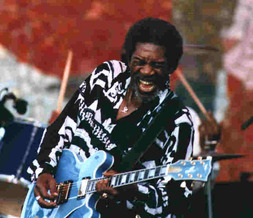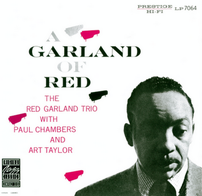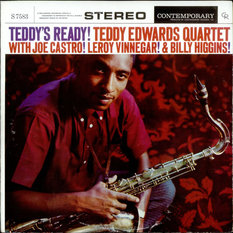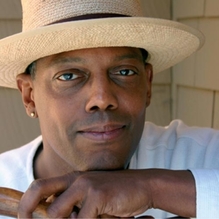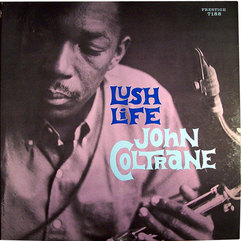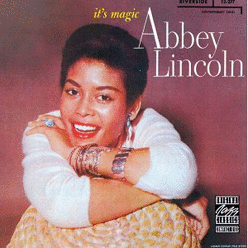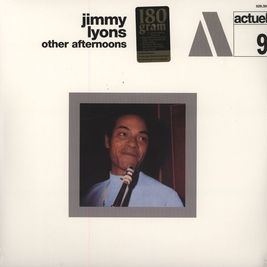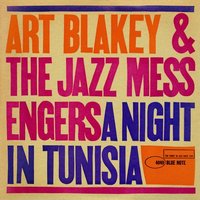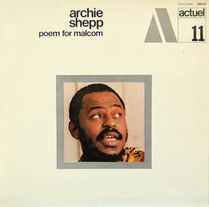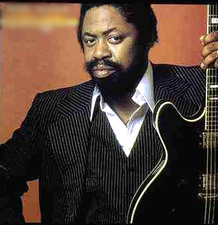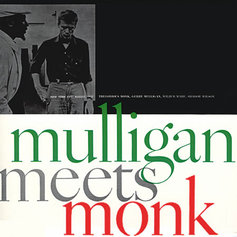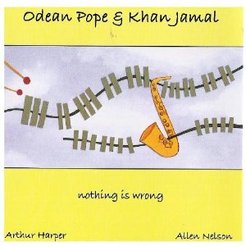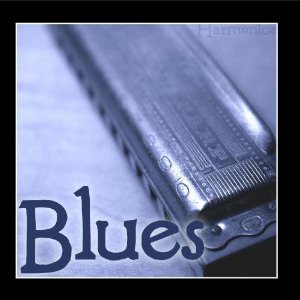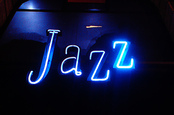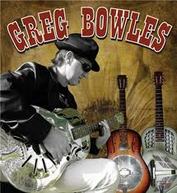 GREG BOWLES. Close your eyes when you listen to Greg Bowles and you’ll swear you’re back in the 20s and 30s listening to one of those great pioneers of Delta blues. His music is stripped back to the basics. With a raw singing style backed by the edgy sounds of his steel guitar, Bowles brings the spirit of those Delta bluesmen back to life. Check out some of his work: http://bit.ly/NbEBB2
BLUES ARTIST BIRTHDAY: Luther Allison (1939) - This American-born guitarist, singer and songwriter was the man to book at blues festivals in the mid-90s. As accomplished a guitarist as he was, Allison wasn't a straight-ahead Chicago blues musician. He learned the blues long before he got to Chicago. What he did so successfully was to take his base of Chicago blues and add touches of rock, soul, reggae, funk and jazz. Well into his mid-50s, Allison continued to delight club and festival audiences around the world with his lengthy, sweat-drenched, high-energy shows, complete with dazzling guitar playing and inspired, soulful vocals. On August 12, 1997, he died from lung cancer that had metastasized to his brain. Watch Luther Allison's "Let's Try Again" on YouTube: http://youtu.be/FXE139IcNhw JAZZ ALBUMS RECORDED: Red Garland – A Garland of Red (1956)
Track Listing:
1. A Foggy Day
2. My Romance
3. What Is This Thing Called Love?
4. Makin’ Whoopee
5. September in the Rain
6. Little Girl Blue
7. Constellation
8. Blue Red
Review by Scott Yanow at Allmusic:
Thirty-three at the time of this, his first recording as a leader, pianist Red Garland already had his distinctive style fully formed and had been with the Miles Davis Quintet for a year. With the assistance of bassist Paul Chambers (also in Davis's group) and drummer Art Taylor, Garland is in superior form on six standards, Charlie Parker's "Constellation" (during which he shows that he could sound relaxed at the fastest tempos) and his own "Blue Red." Red Garland recorded frequently during the 1956-62 period and virtually all of his trio recordings are consistently enjoyable, this one being no exception.
Teddy Edwards - Teddy's Ready (1960) Track Listing:
1. Blues in G
2. Scrapple from the Apple
3. What’s New?
4. You Name It
5. Take the “A” Train
6. The Sermon
7. Higgins’ Hideaway
Review by Scott Yanow at Allmusic:
Tenor saxophonist Teddy Edwards' debut for Contemporary (which has been reissued on CD in the OJC series) gives listeners a strong sampling of the underrated tenor's talents. Edwards, a contemporary of Dexter Gordon and Wardell Gray but sometimes overlooked due to his decision to spend most of his life living in Los Angeles, is showcased on a quartet set with the obscure but talented pianist Joe Castro, bassist Leroy Vinnegar, and drummer Billy Higgins. Performing three standards, three originals (of which "Higgins' Hideaway" is most memorable), and Hampton Hawes' "The Sermon," Edwards has a chance to stretch out and he makes the most of the opportunity, creating some excellent straight-ahead music.
BLUES ARTIST BIRTHDAY: ERIC BIBB (1951) - One of the most imaginative modern musicians working within the blues tradition, Eric Bibb is also one of the least recognized in proportion to his talent, at least in his home country of the United States. Bibb is a singer, songwriter, and guitarist with deep roots in American music, roots that come from his family background and also from his own journey as a musician. Music ran deep in his family; jazz pianist John Lewis of the Modern Jazz Quartet was his uncle, and his father Leon Bibb was an actor and singer who got involved in the rising folk scene in New York's Greenwich Village in the 1950s and early 1960s. Bibb grew up surrounded by folk music royalty. Singer and activist Paul Robeson was his godfather, and such nationally famous singers as Pete Seeger and Odetta were family friends. Another guest, when Bibb was 11, was Bob Dylan. "When I found out that he had arrived I snuck downstairs in my pajamas and had a talk with him about guitar playing. He told me to keep it simple--forget all the fancy s-t," Bibb told the Irish Times. Eric's "For You" at YouTube:
http://youtu.be/uwSbiWkY15I
JAZZ ALBUM RECORDED: John Coltrane – Lush Life (1957)
Track Listing:
Like Someone In Love
I Love You
Trane’s Slo Blues
Lush Life
I Hear A Rhapsody
Review by Lindsay Planer at Allmusic:
Lush Life (1958) is among John Coltrane's best endeavors on the Prestige label. One reason can easily be attributed to the interesting personnel and the subsequent lack of a keyboard player for the August 16, 1957 session that yielded the majority of the material. Coltrane (tenor sax) had to essentially lead the compact trio of himself, Earl May (bass), and Art Taylor (drums). The intimate setting is perfect for ballads such as the opener "Like Someone in Love." Coltrane doesn't have to supplement the frequent redundancy inherent in pianists, so he has plenty of room to express himself through simple and ornate passages. Unifying the slippery syncopation and slightly Eastern feel of "I Love You" is the tenor's prevalent capacity for flawless, if not downright inspired on-the-spot "head" arrangements that emerge singular and clear, never sounding preconceived. Even at an accelerated pace, the rhythm section ably prods the backbeat without interfering. A careful comparison will reveal that "Trane's Slo Blues" is actually a fairly evident derivation (or possibly a different take) of "Slowtrane." But don't let the title fool you as the mid-tempo blues is undergirded by a lightheartedness. May provides a platform for Coltrane's even keeled runs before the tenor drops out, allowing both May and then Taylor a chance to shine. The fun cat-and-mouse-like antics continue as Taylor can be heard encouraging the tenor player to raise the stakes and the tempo -- which he does to great effect.
The practically quarter-hour reading of Billy Strayhorn's "Lush Life" is not only the focal point of this album, it is rightfully considered as one of Coltrane's unqualified masterworks. The performance hails from January 10, 1958 as Coltrane sits in with Red Garland (piano), Donald Byrd (trumpet), Paul Chambers (bass), and Louis Hayes (drums). Coltrane handles the tune's delicate complexities with infinite style and finesse. Garland similarly sparkles at the 88s, while Byrd's solo offers a bit of a tonal alternative. It should be noted that the reading here does not include a vocal from Johnny Hartman. That version can be found on the ever imaginatively monikered John Coltrane & Johnny Hartman (1963).
DAMON RENTIE. With a career spanning more than 20 years, Damon Rentie certainly knows his way around contemporary jazz. Nowhere is the evidence of his genius on the saxophone more evident than in this video of the song “Second Chance”: http://youtu.be/nrSwnPPUHlY
JAZZ ALBUMS RECORDED: Abbey Lincoln – It’s Magic (1958)
Track Listing:
1. I Am In Love
2. It’s Magic
3. Just For Me
4. An Occasional Man
5. Ain’t Nobody’s Business
6. Out Of The Past
7. Music, Maestro, Please!
8. Love
9. Exactly Like You
10. Little Niles
Review by Scott Yanow at Allmusic:
Because Abbey Lincoln has always been careful to sing songs that have a deep meaning for her, all of her recordings through the years are memorable in their own way; there are no duds in her discography. Her second Riverside session (and her third recording), It's Magic has been reissued on this CD in theOriginal Jazz Classics series. The backup musicians are among the best in jazz at the time (Kenny Dorham or Art Farmer on trumpet, trombonist Curtis Fuller, Benny Golson on tenor, Jerome Richardson or Sahib Shihab on reeds, pianist Wynton Kelly, Paul Chambers or Sam Jones on bass, and drummer Philly Joe Jones) and they have opportunities to play short solos. Lincoln is heard at her early best on such numbers as "I Am in Love," "An Occasional Man," "Out of the Past" and Randy Weston's "Little Niles." Recommended.
Jimmy Lyons – Other Afternoons (1969)
Track Listing:
1. Other Afternoons
2. Premonitions
3. However
4. My You
Review by Eugene Chadbourne at Allmusic:
The music of Jimmy Lyons as a leader is of main interest here, but this particularly fine late-'60s session has other valuable lessons to offer about the nature of jazz improvising. The impact of both a bandleader and the music they compose is made very clear by the direction this session took, despite the fact that its rhythm section had already established its own way of playing through previous relationships with pianist Cecil Taylor. But this, along with whatever conceptual impact Taylor may have had on his longtime main horn man, Lyons, are all factors that are tossed in the bin like yesterday's news as the music being created takes its own course. The combination of Lyons with Lester Bowie is simply marvelous. The alto saxophonist's specialty is a kind of pungent yet unsentimental tone, kind of a thinking man's Charlie Parker, while trumpeter Bowie seems to pack every note, whether it is blasted or delicately blown, with deep pockets of potential comedy or melancholy. It is a perfect match of contrasts, made even more interesting by both players' reliance on space, in each case developed as an alternative to the amount of intense energy or sonic bombast being tossed up by other members of these players' regular associations, the Taylor group and the Art Ensemble of Chicago, respectively. From drummer Andrew Cyrille and bassist Alan Silva a listener might expect a certain kind of firepower as well as rhythmic developments being colored in terms of suggestions and impulses rather than firmly shoved in a pocket. These two master players are thrilling here in their adventurous attempts to give their friend Jimmy Lyons a whole new sound on his album. And it is true; while the results can be compared to other alto saxophonist leaders of Lyons' generation, such as the more thoughtful efforts of Marion Brown, this album stands out as containing much superior playing, springing from what seems to be a fully realized conception of just where the music was going. The session has been released by several labels, and not even the bomb-crater-size surface-noise pockmarks of the BYG pressings can destroy the power of these performances. "However" is a great tune, so is the title number and the delicate, pretty set-closer, "My You."
JAZZ ALBUMS RECORDED: Art Blakey - A Night in Tunisia (1960)
Track Listing:
1. A Night In Tunisia
2. Sincerely Diana
3. Sincerely Diana (Alt. Take)
4. So Tired
5. Yama
6. Kozo's Waltz
7. When Your Lover Has Gone
Review by Scott Yanow at Allmusic
The lengthy title track on this CD easily overshadows the rest of the program for it is one of the most exciting versions ever recorded of Dizzy Gillespie's "A Night in Tunisia." Trumpeter Lee Morgan (then only in his early 20s), tenor saxophonist Wayne Shorter, pianist Bobby Timmons and bassist Jymie Merritt formed one of the strongest of the many versions of Art Blakey & the Jazz Messengers and are actually in fine form during the remainder of the satisfying (if anticlimactic) set. [Originally released in 1960, A Night in Tunisia was reissued on a Japanese CD in 2004.]
Archie Shepp - Poem for Malcolm (1969)
Track Listing:
1. Rain Forrest/Oleo
2. Mama Rose/Poem for Malcolm
Review by Scott Yanow at Allmusic
This LP from the English Affinity LP is a mixed bag. Best is "Rain Forrest" on which tenor saxophonist Archie Shepp, in a collaboration with trombonist Grachan Moncur III, pianist Vince Benedetti, bassist Malachi Favors, and drummer Philly Joe Jones, perform some stirring free jazz; the interplay between Shepp and Jones is particularly exciting. On a four-and-a-half minute "Oleo," Shepp "battles" some bebop with fellow tenor Hank Mobley, but the other two tracks, a workout for the leader's erratic soprano on "Mamarose," and his emotional recitation on "Poem for Malcolm," are much less interesting, making this a less than essential release despite "Rain Forrest."
BLUES ARTIST BIRTHDAY: Frank "Son" Seals - Son Seals was a talented showman and fiery guitarist that many fans believe to be the best bluesman of the 1970s. Even as blues music was being eclipsed by the commercial growth of R&B and funk and, later, the dance floor appeal of disco, Seals continued to stay true to his uncompromising vision of guitar-driven blues. A gruff vocalist and raw, electrifying performer, Seals' weapon was his mastery of the almighty guitar riff, which attracted an audience weaned on 1960s-era blues-rock. He died on December 20, 2004 in Chicago, Illinois.
Jazz Albums Recorded:
Thelonious Monk w/ Gerry Mulligan - Mulligan Meets Monk (1957)
Track Listing:
‘Round Midnight
Rhythm-A-Ning
Sweet and Lovely
Decidedly (Album Version – take 4)
Decidedly (Album Version – take 5)
Straight, No Chasaer (Album Version –
take 3)
Straight No Chaser (Album version –
take 1 alternate)
I Mean You (Album Version – take 4)
I Mean You (Album Version – take 2
alternate) Review - Scott Yanow at Allmusic: :
In the late 1950s/early '60s, baritonist Gerry Mulligan participated in several recorded "meetings" with jazz musicians whom he admired. For this set (reissued on CD in the OJC series), Mulligan teams up with pianist Thelonious Monk (who shares co-leadership), bassist Wilbur Ware, and drummer Shadow Wilson on a surprisingly successful date. Monk and Mulligan blend together quite well on what was essentially Thelonious' repertoire of the era including "'Round Midnight," "Rhythm-A-Ning," "Sweet and Lovely," and "I Mean You."
Odean Pope & and Khan Jamal Quartet - Nothing is Wrong (2003)
Track Listing:
Almost Like Me Part II
Nothing is Wrong
Three
The Spirit Room (take 3)
The Magnificent One
The Rhythm Thang
Voice
The Spirit Room (take 1)
Review - Steve Loewy at Allmusic:
This is an eminently tasteful recording, as to be expected from any session led by Odean Pope and Khan Jamal, each masters of the understated. What distinguishes this one, though, is the raw, powerful, and, yes, Coltrane-esque sound of Pope, who, like a fine wine, seems to get better with age. The saxophonist came of age in the '60s and '70s, and although he incorporates some lessons from the more radical aspects of those decades in his adventurous solos, he has always been strongly attracted to melody and form. It comes together well here, as the tunes resonate with quirky lines, and his improvisations are fresh and seemingly perfectly constructed. Pope is a sort of middleweight champion (to apply the term used to describe Hank Mobley), updated to the 21st century. On the impressive title piece, "Nothing Is Wrong," for example, he lets loose a torrent of thoughtful, energized, and powerful streams, without ever sacrificing good taste. His composition "The Spirit Room" named after the famed recording facility at CIMP, is worthy of wide distribution (which is perhaps why two fascinating takes are provided), its slightly twisted melody a superb vehicle for improvising in the vein of Hard Bop and beyond. Khan Jamal suffered a stroke a year before the recording, and he had to re-learn his trade. The results are remarkable, as he sounds confident and technically adept, his vibes a fine contrast to the sax. Allen Nelson does a good job on drums navigating the tricky rhythms, and Arthur Harper shows himself to be a decent soloist and good group player. There is not a weak track on the album, the results clearly the product of considerable discipline and much practice. The sound quality is excellent, by the way."
SER FRANKLIN. This gifted jazz artist has a voice as smooth as sweet, creamy butter. Listening to him sing brings you to that special place where the true meaning of jazz seeps into your soul and sweeps you away: http://youtu.be/jPdZCKaSahY.
THE LAUREN MITCHELL BAND. I was blown away by this video. The rich, explosive vocals of Lauren Mitchell are complemented by the talents of a dynamic group of musicians. Together, they produce blues music that is nothing short of magic: http://youtu.be/tVd3ZJgacMA
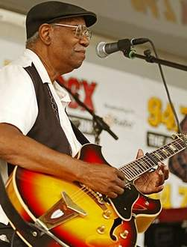 October 9, 1935 – August 4, 2012 Today, I learned that one of my favorite blues guitarists, Johnnie Bassett, passed away on August 4. After a long and storied career, the past two decades saw his career enjoy a second wind as his name became acclaimed in international blues circles. He became known as "Detroit's Gentleman of the Blues", with a playing style that fit the moniker. "This is
one of those artists where everything just came together — jazz, soul, blues, R&B," said publicist Matt Lee. "We'll never see his like again." His last album, I Can Make That Happen, was released on June 19, 2012. RIP, Mr. Bassett, and thank you for the great music you shared with us.
|

